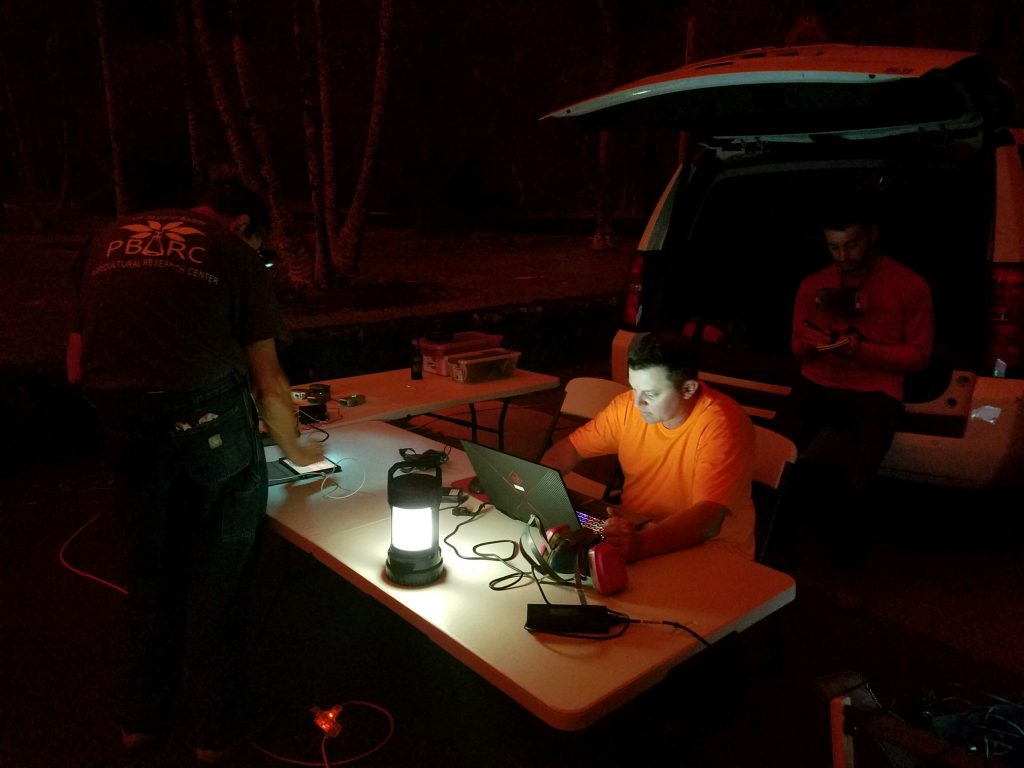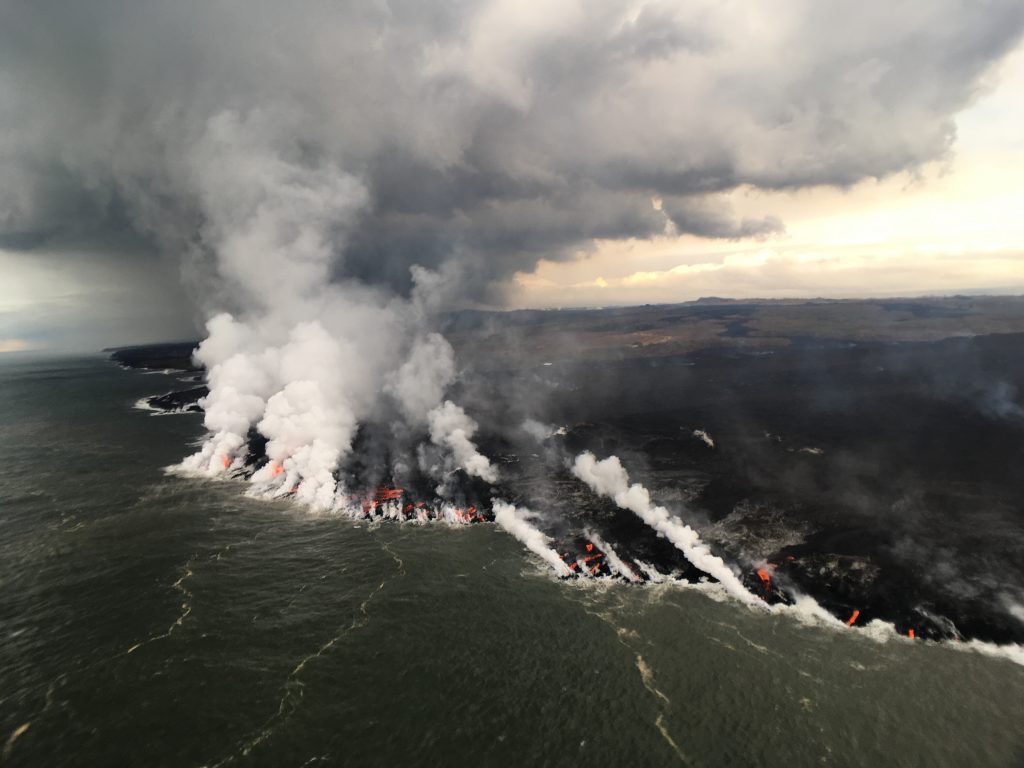PHOTOS & VIDEO: Channel Overflows Visible
The U.S. Geological Survey released these photos and video of the East Rift Zone on Saturday, July 21, 2018.
Kīlauea Volcano’s Lower East Rift Zone
Fissure 8, source of the white gas plume in the distance, continues to erupt lava into the channel heading northeastward from the vent.
Near Kapoho Crater (lower left), the channel turns south, sending lava toward the coast, where it enters the ocean in the Ahalanui area. Channel overflows are visible in the lower right.
This aerial view, looking to the southwest, shows the most vigorous ocean entry of the Fissure 8 flow, which is located a few hundred yards northeast of the southern flow margin.
During HVO’s early morning helicopter overflight along the coastline, orange streams of lava were entering the ocean in the vicinity of Ahalanui.
Strong trade winds were pushing the white laze plumes inland.
Using cell phones, USGS scientists can quickly relay information to emergency managers, even during helicopter overflights.

Using cell phones, USGS scientists can quickly relay information to emergency managers, even during helicopter overflights. Click to enlarge. PC: USGS
Coordinates for the active ocean entry, lava channel overflows, or other hazards observed by field geologists can be communicated in near real-time to Hawai‘i County Civil Defense and other public safety officials who make decisions about closures or evacuations.
The Unmanned Aircraft Systems (UAS) team prepares for their overnight flights of Fissure 8 and the upper lava channel.

The Unmanned Aircraft Systems (UAS) team prepares for their overnight flights of Fissure 8 and the upper lava channel. Click to enlarge. PC: USGS
UAS assist with the USGS eruption response by flying missions into hazardous areas, collecting data on lava channel velocities and locating channel overflows. UAS can also collect thermal and gas data and look for changes at other vents along the fissure system.
USGS gas geochemists set up a specialized camera near Fissure 8 to measure sulfur dioxide in the gas plume rising from the vent.
USGS field crews set up a gravimeter to collect data on where magma might reside in Kīlauea’s lower East Rift Zone.












